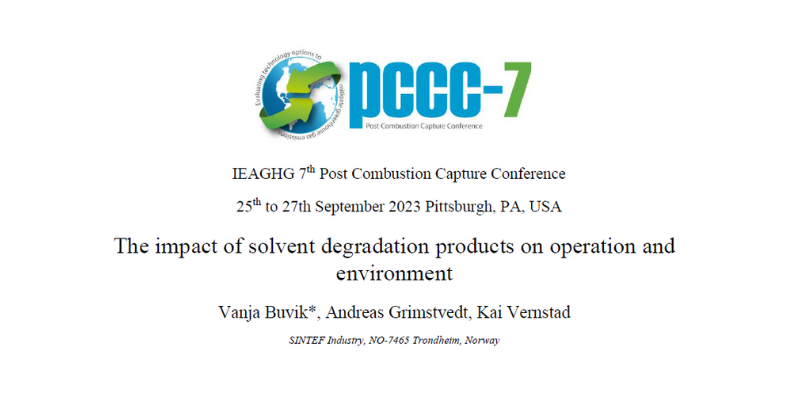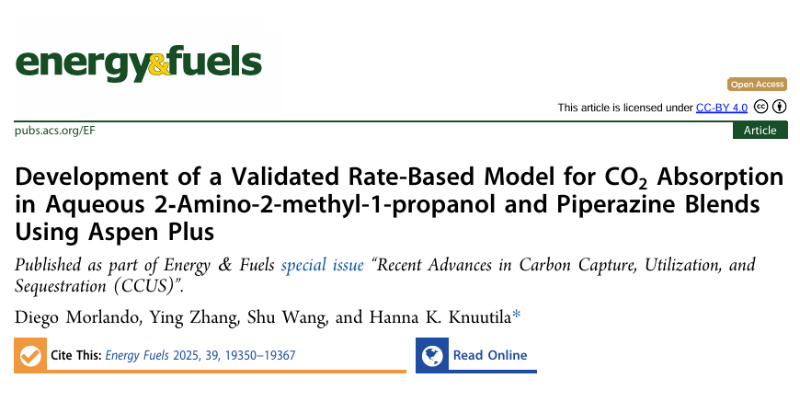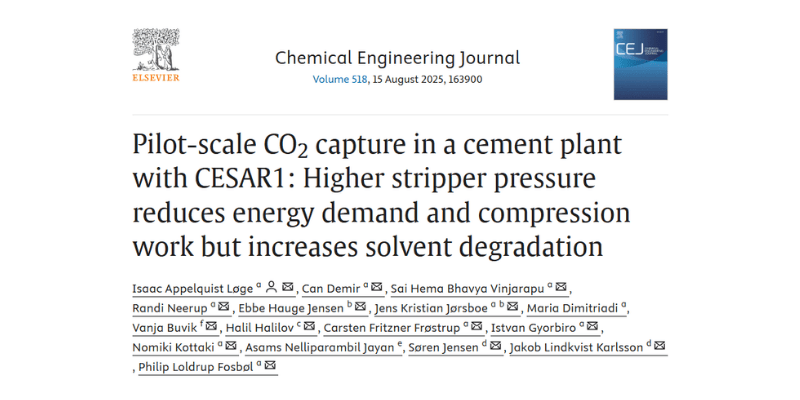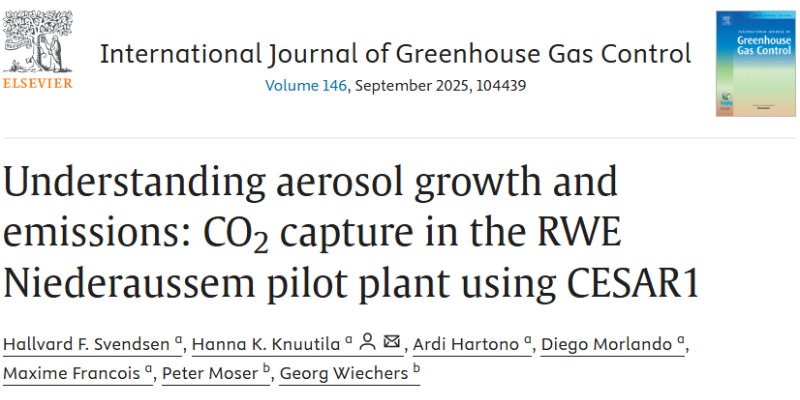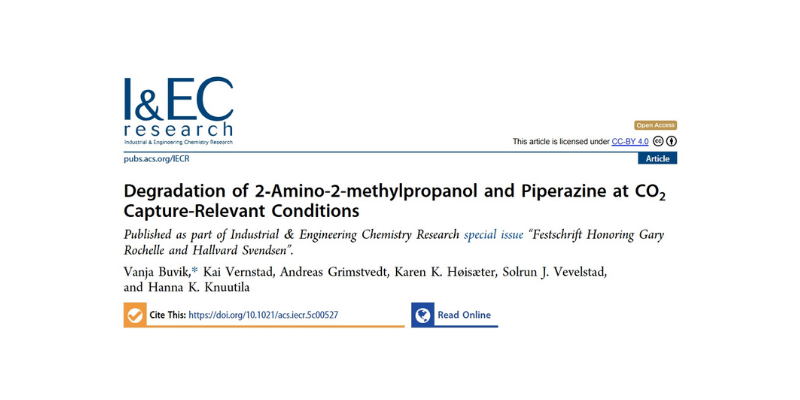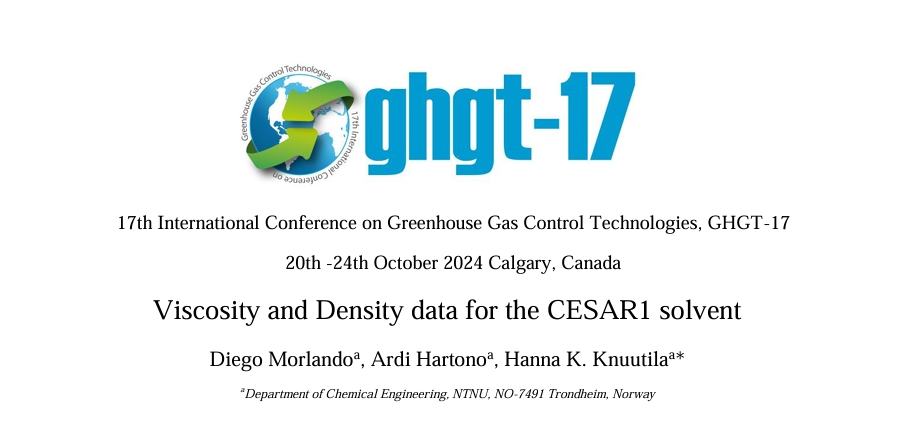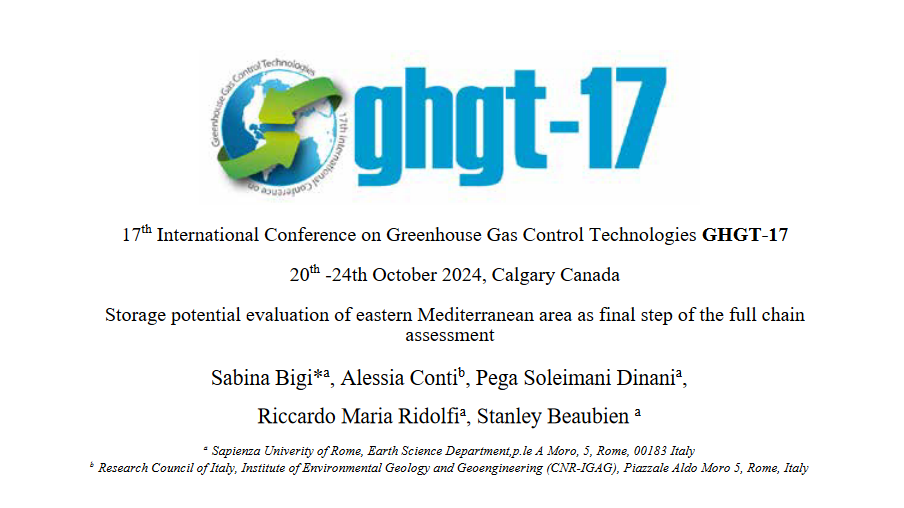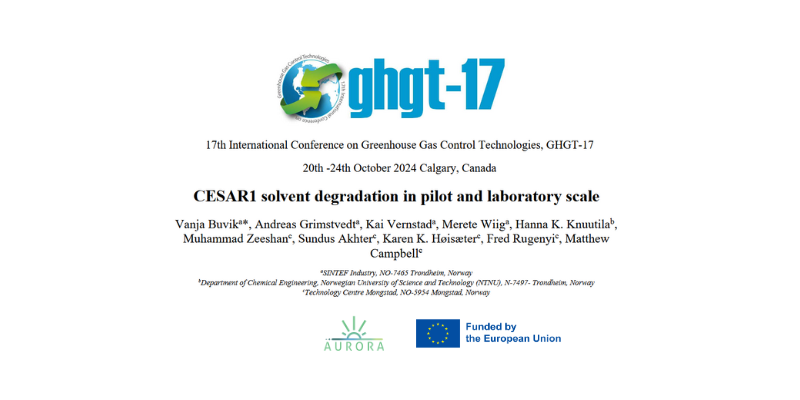When solvents, such as ethanolamine (MEA), are used to capture carbon dioxide (CO₂) emissions in industrial processes, they gradually break down over time, a process called degradation. This breakdown reduces the solvent’s ability to absorb CO₂ efficiently, increases its corrosiveness, and can create harmful emissions and toxic by-products.
As the solvent degrades, it also makes the operation of CO₂ capture plants more challenging. The degradation process produces a wide variety of by-products, including heat stable salts (HSS), amides, acids, nitrosamines, volatile organic compounds, and ammonia. Some of these compounds are difficult to remove, while others can impact the performance and safety of the system.
Thermal Reclamation as a Solution
To extend the life of these solvents and reduce their degradation-related issues, a process called thermal reclamation is used. In this process, a chemical called sodium hydroxide (NaOH) is added to the degraded solvent to break down specific by-products, such as amides. This reaction helps recover useful components of the solvent, such as non-degraded amine and organic acids, while minimizing solvent loss. The solvent is then heated and distilled to remove impurities. Interestingly, some by-products, such as nitrosamines, can also break down into simpler components, like amines, at the high temperatures used in the reclamation process or even during normal operations at the plant.
Experimental Approach
This study focuses on investigating how individual degradation products of ethanolamine (MEA) behave under alkaline (basic) and high-temperature conditions. Inspired by earlier research, the process involves mixing the degraded compounds with sodium hydroxide and leaving them at room temperature for 24 hours before heating the solution to 140°C for another 24 hours.
The composition of the solution is analyzed before and after treatment using a technique called liquid chromatography-mass spectrometry (LCMS), which identifies and measures the chemicals present. These experiments are being conducted on both fresh MEA—an unused, clean solution—and degraded MEA, which has been broken down using the SINTEF cyclic solvent degradation rig, a laboratory setup that mimics real-world plant conditions. This approach allows researchers to study a wider variety of degradation products, including complex ones that form over time in CO₂ capture plants.
Expected Results
The researchers expect to observe an increase in the concentration of recovered MEA, a decrease in the concentration of amides, and the formation of organic acids as by-products. These results will provide insight into the chemical reactions that occur during thermal reclamation and help optimize the process for extending solvent life.
Future Work on CESAR1 Solvent
Once this behavior is well understood for MEA, the team plans to perform similar experiments on a newer solvent called CESAR1. However, before doing so, they will need to further study CESAR1’s degradation behavior and refine analytical techniques to identify its breakdown products accurately.
Understanding how solvents degrade and how they can be efficiently reclaimed is crucial for improving CO₂ capture technologies. By extending the lifespan of solvents, researchers can reduce the costs and environmental impacts of these processes while ensuring cleaner and safer plant operations. This work contributes to the development of more sustainable and efficient CO₂ capture systems, which play a key role in reducing greenhouse gas emissions.
Publication – Development of a Validated Rate-Based Model
Abstract In this work, we developed a new e-NRTL thermodynamic framework for CO2 absorption in aqueous mixtures of 2-amino-2-methyl-1-propanol (AMP) and piperazine (PZ) in Aspen Plus. The e-NRTL AMP/PZ/H2O/CO2 model was fitted on experimental data covering a range of AMP concentration from 12 to 48 mass % and PZ concentration…
Publication – Pilot-scale CO2 capture in a cement plant with CESAR1
Abstract Carbon capture from hard-to-abate industries is essential. This study investigates the effect of stripper pressure on the performance of amine-based CO2 capture from cement flue gas, using the CESAR1 solvent. Through a rigorous data filtering and binning methodology, experimental results were systematically categorized, enabling a precise evaluation of how…
New Publication: Aerosol Modeling in CO2 absorption using CESAR1
We are proud to announce that Hallvard F. Svendsen, Hanna K. Knuutila, Ardi Hartono, Maxime Francois and Diego Morlando at NTNU, together with external collaborators Peter Moser (RWE) and Georg Wiechers (RWE) have published a new article presenting results from the AURORA and SCOPE projects.The publication introduces a new class-based…
Thermodynamic Properties of CO₂ Absorption in CESAR1 — Essential Data for Better Process Modelling
We are proud to announce a new scientific publication from the AURORA project, authored by Diego Morlando, Ardi Hartono and Hanna K. Knuutila, published in Carbon Capture Science & Technology. This important work provides extensive experimental data on the thermodynamic properties of CESAR1, a key solvent blend for industrial carbon…
Journal Publication – In-Depth Study of CESAR1 Solvent Degradation Under CO₂ Capture Conditions
A new scientific publication based on research from the AURORA project has just been released in the journal Industrial & Engineering Chemistry Research. This study delivers an in-depth analysis of the degradation behaviour of the CESAR1 solvent —a popular choice for solvent-based post-combustion CO₂ capture.This work, developed under the AURORA…
Conference publication – GHGT-17: Viscosity and Density data for the CESAR1 solvent
Abstract Global warming is a major issue that needs to be addressed and limited. The CESAR1 solvent blend has a high potential for becoming a commonly employed, commercial solvent system. In this work, the viscosity and density data for aqueous CO2 loaded CESAR1 (26.6 wt.% AMP 12.8 wt.% PZ) solution…
Conference publication – GHGT-17: “Storage potential evaluation of eastern Mediterranean area as final step of the full chainassessment”
The final step in capturing and storing carbon dioxide (CO₂) emissions is geological storage, where CO₂ is injected deep underground into carefully chosen locations. These locations could be natural formations like saline aquifers (underground reservoirs filled with salty water) or empty oil and gas fields.This work, part of the AURORA…
Understanding Solvent Degradation in CO₂ Capture – CESAR1 Solvent Degradation in Pilot and Laboratory Scale
The fight against climate change requires innovative solutions, and one promising method is CO₂ capture and storage (CCS). CCS involves capturing carbon dioxide from industrial emissions before it reaches the atmosphere. At the heart of this process are specialized chemical solvents, such as CESAR1, which absorb CO₂ from flue gases.While…
Turning Waste Into Opportunity: Thermal Reclamation Chemistry of Common Amine Solvents
CO2 capture technology is vital for reducing greenhouse gas emissions. But what happens when the chemicals used in this process wear out or degrade? Scientists have been studying how to rejuvenate these chemicals through a method called thermal reclaiming. This research focuses on ethanolamine (MEA), a widely used solvent for…
Closing Knowledge Gaps – Density and Viscosity of Unloaded and CO2-loaded Aqueous AMP-PZ blends
AURORA’s latest scientific journal publication provides experimental density and viscosity data on different unloaded and CO2-loaded aqueous blends of 2-amino-2-methyl-1-propanol (AMP) and piperazine (PZ) used for absorption-based CO2 capture. The paper also provides correlations for density and viscosity suitable for various modelling works.In our previous review article, we identified knowledge…

